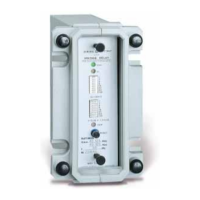
Do you have a question about the GE TOV and is the answer not in the manual?
| Type | Time Overvoltage Relay |
|---|---|
| Manufacturer | GE |
| Function | Overvoltage Protection |
| Mounting | Panel Mount |
| Standards | IEC 60255 |
Lists three-phase TOV relay models and their corresponding descriptions.
Lists single-phase TOV relay models and their corresponding descriptions.
Details special TOV relay models with specific timing or contact configurations.
Specifies the operating and storage temperature ranges in Fahrenheit and Celsius.
Details insulation test requirements between terminals and ground, and independent circuits.
Lists the different operating voltage ranges available for the TOV relay models.
Provides the rated and operating ranges for the auxiliary DC/AC power supply.
Specifies the continuous, make/carry, and break capacity of the trip contacts.
Details the capacity for continuous, make/carry, and carry operations of auxiliary contacts.
States the voltage and time accuracy specifications for the relay.
Specifies the maximum ambient humidity the relay can withstand without condensation.
Lists the rated, effective, and operative frequency ranges for single and three-phase models.
Provides burden values (VA) for different voltage ranges at specific tap settings.
Specifies the maximum continuous voltage ratings for different voltage ranges.
Lists various electrical type tests including insulation, impulse, and noise tests with standards.
Specifies the instantaneous and definite time ranges for relay operation.
Explains input transformers, rectification, level detection, and trip indication for three-phase models.
Explains features like third harmonic filter and mode selection for single-phase models.
Describes the steel construction of the TOV case and provides general dimensions in a figure.
Explains that the model is on the nameplate and should be checked against the description section.
Illustrates external connections for both three-phase and single-phase TOV relay models.
Describes the single printed circuit board and its connection via a rear connector.
Shows the location of controls (switches) and indicators (LEDs) on the front panel.
Discusses internal controls like jumpers for configuration and notes factory calibration.
Instructs to verify nameplate data and check for damage after receiving the relay.
Introduces the electrical tests required to verify relay operation and factory calibration.
Recommends a clean, dry, well-lit environment and mounting on a vertical surface.
Explains how to set the trip level using the upper switch block based on a formula.
Refers to the ACCEPTANCE TESTS section for installation tests according to user criteria.